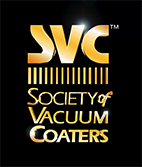Home » Technical Program » Atomic Layer Processing
Atomic Layer Processing
Over the last few years, atomic layer processes (ALPs), such as atomic layer deposition (ALD), atomic layer etching (ALE), molecular layer deposition (MLD), and atomic layer epitaxy (ALEp) have increased in importance, enabling many new products and applications. With excellent uniformity, nanoscale precision, and high versatility, ALPs have applications in sensing, optical coatings, energy storage, and microelectronics. Recent advances in low temperature processing make ALP methods attractive to the processing polymers, biomaterials, and other applications with low thermal budgets.
Sequential Infiltration Synthesis (SIS), alternatively called also Vapor Phase Infiltration (VPI) complements the above-mentioned layer-by-layer technologies by its ability to form 3D nanostructures by a bulk diffusion and selective chemical reactions of precursor with functional groups in polymers or block co-polymers (BCP). Highly selective reactions of precursors with e.g., carbonyl groups (C=O) in the polymer bulk allows integration of inorganic materials into the organic matrix, resulting in a hybrid material. A self-organized BCP film after the SIS will form 3D nanostructures.
The common feature of all those methods is the use of self-limiting reactions that can provide atomic-scale resolution in both vertical and horizontal directions: this property can also be complemented by selectivity in etching or deposition. Selectivity in deposition or etching may solve some of the processing challenges in the technology of nano-devices, e.g., alignment of nanometer-sized features. A high degree of control makes the selective atomic scale processes attractive for future nano-fabrication methods.
We are soliciting oral and poster contributions in areas including both established technologies and creative new developments. Advanced technologies which successfully cross over from early-stage feasibility studying to commercially viable industrial solutions are of particular interest.
Session Topics will include:
- Innovations in methods for upscaling ALPs towards high-volume industrial applications
- New business concepts or market perspectives that accelerate transfer of ALPs and selective atomic processes
from the lab to commercial viability, - Current commercial products using ALPs,
- Precursor synthesis,
- Fundamental aspects of ALP,
- Process development,
- Plasma enhanced processes,
- Challenges and applications of ALPs and selective atomic processes,
- Novel concepts for ALP process control, characterization, and monitoring,
- Applications of selective atomic processes, and
- Selective atomic processes in micro- and nanoelectronics.
Atomic Layer Processing (ALP) TAC Co-Chairs: Sara Harris, Forge Nano, Inc., sharris@forgenano.com; Ivan Maximov, Lund University, ivan.maximov@ftf.lth.se; Craig Outten, Universal Display Corporation, coutten@verizon.net; Matt Weimer, Forge Nano, Inc., mweimer@forgenano.com

